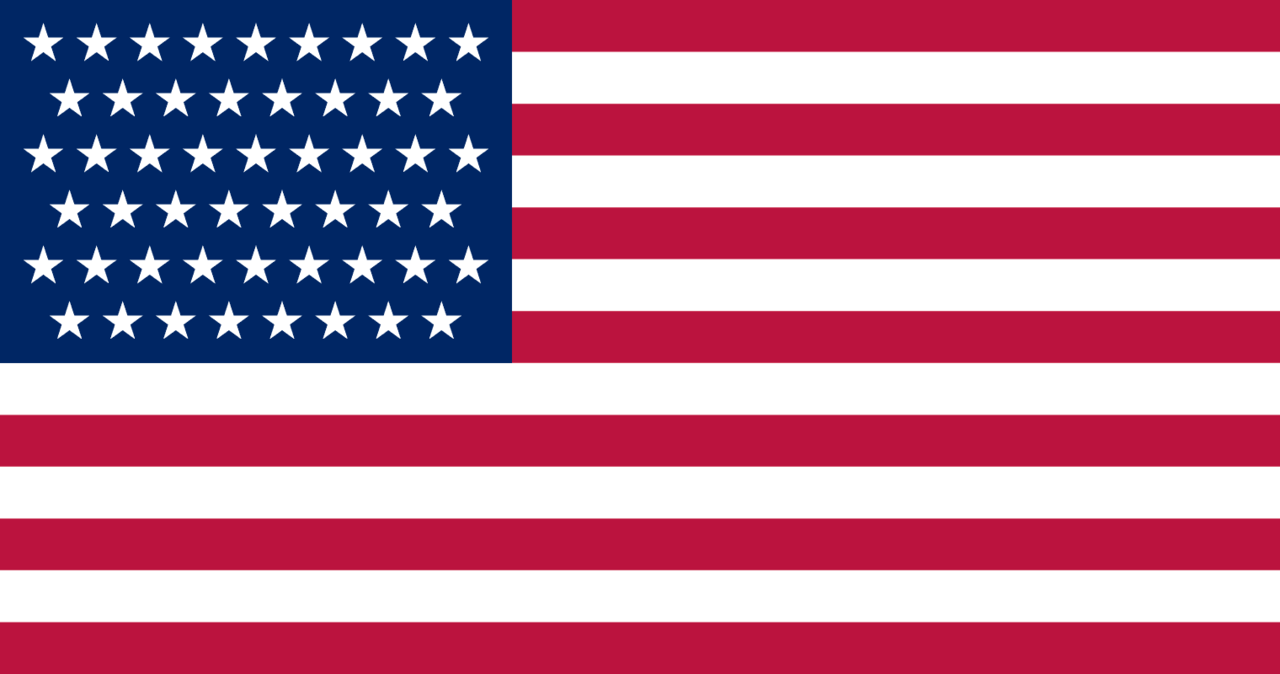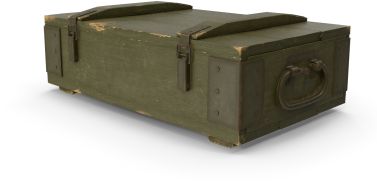After its heroic charge on the Ingouf farm, the 3rd Battalion took up defensive positions around the farmhouse. The battle for Carentan was far from over, and the men were preparing for the German counterattack and the tough fighting ahead.
The men were exhausted and diminished, and the battalion was depleted. Lieutenant-Colonel Cole awaited the imminent arrival of reinforcements from the 1st Battalion of the 502nd Parachute Infantry Regiment, commanded by Lieutenant-Colonel Cassidy.
Assigned by Lieutenant-Colonel Cole to pass on the request for reinforcements to Lieutenant-Colonel Cassidy, Private Bootle came under fire as he turned back along the Carentan road. At this point, the 1st Battalion of the 502nd Parachute Infantry Regiment was north of bridge N°4. Private Bootle gave the message to Sergeant Joseph H. Gillion, who first sent it to the regimental command post, before it reached the 1st Battalion and Lieutenant-Colonel Cassidy.
During the charge, Lieutenant Provost was wounded in the head. He returned to the farm, his face bloodied, but in the absence of a medic, Lieutenant-Colonel Cole sent him to the rear with the same message. He got the message to a sergeant in an advanced section of the 1st Battalion. About 10 minutes later, the 502nd Parachute Infantry Regiment, 1st Battalion started to move. In turn, they were subjected to enemy fire that cut into them.
For his part, Lieutenant-Colonel Cole had still a lot to do, once the command post had been established. During the charge, two first-aid men had been wounded and another one killed. There were still many wounded to treat, so Lieutenant-Colonel Cole and First Sergeant Sprecker gave first aid to the wounded from the fighting that was still going on, while the surviving medics treated the casualties from the charge.
Lieutenant-Colonel Cole requested by radio to be supplied with ammunition, as well as an ambulance to evacuate the wounded to the rear. By this time, the bridge N°2 had been repaired by the engineers to allow vehicles to pass, and the Belgian gate had been removed.
 Lieutenant-Colonel Robert G. Cole, 3rd Battalion, 502nd Parachute Infantry Regiment, 101st Airborne Division.
Lieutenant-Colonel Robert G. Cole, 3rd Battalion, 502nd Parachute Infantry Regiment, 101st Airborne Division.
The “ambulances” arrived, an ordinary truck, carrying ammunition. There were so many wounded that two jeeps were also used to carrying the wounded. The ambulances had been going back and forth.
Lieutenant-Colonel Cole’s staff got back to him. They had been scattered during the jump. A shell landed on the doorstep just outside, the shards injuring staff members and a soldier, who were immediately loaded into the ambulance.
The 1st Battalion had advanced along the causeway to Carentan. The men of the “B” Company, like the men of the 3rd Battalion the day before, came under fire on the road and lost 8 men just in crossing the gate. The leading elements reach the hedgerows adjacent to the farm.
The Germans were preparing a counterattack, which Lieutenant-Colonel Cole was worried about because of the intensified firing and the way his own men were responding. It seemed that this first counterattack was directed through the orchard.
The 1st Battalion had fallen back under intense enemy fire and troop movement. Some groups remained close to the enemy, taking up positions to the north of the hedgerows, while the Germans took up positions to the south of the same rows. Thus, Americans and Germans found themselves in positions just a few meters apart, simply separated by the hedge and unable to see each other.
The Americans knew that the enemy was establishing their line of fire on the other side of the hedge, solely by the sound of the guns. And many of them fought all day and saw no one. They fired through the hedges, hoping that their continuous fire would repel the enemy. In reality, grenade fighting was rarely used in these engagements, and bayonet fighting even less so.
All day long, the fight was fierce. And it couldn't have been any other way. The two sides were so close that it was almost inevitable. The units had to accommodate themselves tactically to the geometry of the land and were not used to hedges enclosing a field. Soldiers fought in small parties. No company was spared any casualties, as the advance was made under enemy fire.
The situation was scrambled, as units were strewn all over the hedgerows. Most of the 3rd Battalion was spread out on the right and around the farm. Some elements were still on the left, along the Carentan road, like First Sergeant Odom and his men, who were holding the position they had cleared of German machine guns, and who could see, on the right of the road, Lieutenant Swanson and the men of “A” Company emerging from a ditch.
As for the 1st Battalion, Lieutenant-Colonel Cole deployed them as follows:
- “A” Company, 1st platoon was assigned to the right of the house.
- “B” Company was assigned to the left of the house.
- “C” Company was assigned forward with its left holding onto the Carentan road.
Machine guns are positioned along the Carentan road and to the left of the road. The men from “A” Company kept coming on and some of them joined the men of the 3rd Battalion in the ditches. As the men amassed in numbers and took up defensive positions, the mortar fire intensified, falling in barrage on this area.
“B” and “C” Companies stayed in small parties working together through most of the day. The low distribution and dispersion of the companies meant that it had no rear. It was more difficult to organize the men, so as to build up a reserve on which to rely. If the front line cracked, there would be no choice but to retreat back onto the causeway.
Regarding artillery cover for infantry, Captain Rosemond at the farm is hampered by hedges. They mask the fields, and he can't see where the artillery fire is dropping.
He had to trust his instincts and judge by the sound whether the shells were falling where he wanted them to. During the morning and until supplies arrived, the radio was damaged and deprived them of all contact with the batteries. From midday onwards, and for several hours at a time, he carried out his work as a forward observer without any problems.
The men in the ditches had seen enough of the enemy during the artillery fire to confirm the general feeling that it would try to find its way back, in other words that a counterattack was imminent. During this time, “H” Company lost six men in less than ten minutes, caused by machine-gun fire in the direction of the bridge. That day, more men died lying in the ditches than in going forward.
Elsewhere, German groups attempted breakthroughs and routed certain groups or retreated themselves.
Lieutenant Swanson led a small team of 12 or 14 men up the Carentan road. They positioned themselves near the second house, set up a machine gun and prepared to defend the area. Heavy fire from a hedge ahead forced the defenders to go to earth and stay flattened, as a group of Germans attempted to bypass them on the right and get on the rear of Lieutenant Swanson’s party. They ran back along the ditch.
Corporal Leroy Drummond of “H” Company was with a group of men from the 1st Battalion of the 502nd Parachute Infantry Regiment when the German counterattack began. They withdrew cautiously, wary of exposing themselves, not having a force strong enough to contain the enemy approaching along the hedges.
 Americans and Germans were very close, just a few meters apart, simply separated by the hedge.
Americans and Germans were very close, just a few meters apart, simply separated by the hedge.
They took up position in a dugout cleared of Germans and used an American machine gun to fire at the enemies along the hedge, shooting down several of them and forcing the others to retreat.
Somewhere else, a group of Germans were spotted coming down the Carentan road, with two women in front of them. At first, the soldiers thought they were surrendering. Then they saw the machine guns and fired at the Germans, while the women escaped.
That's how the morning was summed up: small-scale fighting, but with heavy losses on both sides. There had been general apprehension during the German resurgence.
Captain Simmons and his men were in a ditch half-filled with water when they emerged and spotted several Germans coming out of a dugout and running behind a hedge. They fired on the group of American soldiers, who had no choice but to descend into the water, this time to the river's edge.
Around noon, the word comes down that the men must cease firing and that the enemy wants a truce. Lieutenant-Colonel Cole passes on the word that the soldiers are to hold their positions but not fire again until this truce is over. But like the orders given at the time of the charge, not all the men received the truce order.
The front line was so extensive and the groups of men so dispersed that it was impossible to get the message across. A rumor spread through the ranks of the soldiers, so that someone shouted: “They’ve surrendered”. Another rumor spoke of a captured German officer: “We’ve captured a field marshal”. Most of the men knew that the truce had been called to evacuate the dead and wounded, and that the battle would resume as soon as the truce was over.
This impression was confirmed when Major Douglas T. Davidson of the Medical Corps, carrying a red cross flag and accompanied by two Germans in front of him with white flags, advanced towards Carentan to discuss a truce with the German command. This effort was unsuccessful, as he was unable to see the commander.
Meanwhile, the battle calmed down, although occasional gunfire could be heard from men who hadn't heard that there were parley talks. A machine-gun burst from the German side breaks the heavy silence that hangs over the area. A few mortars fall here and there.
The regiment called up to ask who was firing. It was told that the Germans were. To this, it was said: “Don’t let any of our men fire except in self-defense”.
During this time of parley, the wounded were evacuated. A chaplain arrived and read to 30 wounded.
Major Davidson returned 45 minutes later. And with that, the fighting resumed with an intensity unmatched during the day. The Germans cut loose with everything they’ve got, rifle fire, machine guns, mortars and artillery.
For the Americans, there was no doubt that the Germans had taken advantage of the truce to organize their next assault on the line separating the two camps. Casualties accumulated all along the line, under intense and precise fire from enemy artillery.
Lieutenant-Colonel Cole called the Regimental Command Post once for permission to fire. He was told to wait, as Major Davidson had not yet returned.
He waited and called again, but the command was hesitant, with no official notice of the end of the truce. At that moment, a shell dropped near the house, Lieutenant-Colonel retorted: “Listen to that!” Lieutenant-Colonel Cole said, “How about telling my men to fire?”
Once again, he was ordered to wait, but men of 502nd Parachute Infantry Regiment had taken the situation into their own hands and were already bearing down with every weapon they had.
According to Captain Rosemond, who was the Artillery liaison officer, and therefore in a good position to know: “I felt certain that they prepared for the artillery attack during the truce. It was the heaviest shelling they gave us at any time, and quite well regulated”.
Although the Americans expected the hostilities to resume, the men relaxed during the truce and there was a dip in morale when the fighting broke out in the afternoon.
The afternoon's fighting continued in the same deadly way as in the morning. Except that the 3rd Battalion's offensive momentum had been exhausted, with men who had already given their all in the fighting of the previous day and morning. Nevertheless, they did not give in, and the afternoon was a period of ferocious holding out for both battalions, as enemy fire intensified from an invisible enemy revealed only by the detonating noise of its guns.
Private Peter P. Dunsky's testimony is striking in its description: “When we heard rifles and machine pistols fire from 200 yards away for ½ an hour, then from 100 and then from 50 yards, we knew they were coming that much closer to us. The b-r-r-r-r sound of the machine guns would double, then treble in volume, not more shots, but more sound. We could hear them working the bolts of their rifles. We could hear their cartridge shells rattle. And the nearer they came to us, the more accurate they became”.
The men withdrew, giving up their places when wounded. Mortar and machine-gun fire was constant, and Lieutenant-Conel Cole figured that the front line was on the verge of cracking.
 Representation of the cabbage patch, according to the After Action Report.
Representation of the cabbage patch, according to the After Action Report.
Along the second hedge, the defensive line consisted of just ten men. Their machine gun was jammed, and they were holding on with rifles and grenades. Captain Simmons went back and forth to supply them with ammunition.
Captain Simmons and his party set up a defensive line in the hedge next to the house, so that if the men had to withdraw across the field, they could cover them during the withdrawal and prevent a potential German breakthrough.
Along the lines and hedgerows, rifle and machine-gun fire wreaked havoc among the paratroopers, who fought close to the enemy. In the rear, mortar and artillery were causing the most casualties.
The wounded moved back along the ditches if they could crawl. If not, they stayed where they were, and the aid men try to crawl to them and dress them on the spot. But they could not be evacuated. The intensity of enemy fire was such that the carts couldn’t get past bridge N°4.
The sound of detonations grew louder and louder, accompanying the advance of the German troops. They were so close that some rifle fire hit the house.
At this point, even for Lieutenant-Colonel Cole, the situation seemed desperate. In his eyes, the men had already “fought to the last man” and he couldn't ask any more of them. He felt it was his duty as a leader to retreat to preserve the lives of his men. And if they had to retreat, they'd better leave the wounded behind. He must have thought that the Germans would respect the codes of war and care for their wounded.
Lieutenant-Colonel Cole had a withdrawal plan. He spoke to Lieutenant-Colonel Ginder, the Regimental Executive to tell him that men were needed in the rear to cover the advanced battalions when they withdrew. The 2nd Battalion of the 502nd Parachute Infantry Regiment was to establish a firing position behind the La Madeleine River (Bridge N°4), whose mission would be to create a smoke screen around the farm as they withdrew.
 Lieutenant-Colonel Cole's plan for a withdrawal solution.
Lieutenant-Colonel Cole's plan for a withdrawal solution.
It went without saying that the best thing was to get out as fast as possible. Nevertheless, there was still one last card to play to avoid withdrawal.
Artillery was their last chance, but Captain Rosemond's radio was jammed. What their artillery was sending down was insufficient in intensity and too far from the defensive lines to push the enemy back. The situation required everything the artillery could give, and as close as possible. Finally, Captain Rosemond got the radio working.
He spoke to Captain Charles Aldrich at the observation post, who replied that the artillery was almost out of ammunition. To this, Captain Rosemond retorted: “For God’s sake, get some!” and pleaded like a man pleads for his life: “Get it! We must have it”.
Finally, the announcement that the battery had just been resupplied sounded like a sweet melody. The artillery was going to give everything it had and barrage the area.
Just when the situation looked hopeless for the paratroopers, an Artillery barrage fell on the front line, crushing the last German attempt to counterattack, but killing some paratroopers. It was a friendly fire, but the situation was really desperate. The fire lasted for not more than five minutes, but it did the trick. When the American guns ceased, Lieutenant-Colonel Cole listened carefully and what he heard told him, he believed, that the storm had passed. The echo of the crackle of fire was still perceptible but seemed distant.
Lieutenant-Colonel Cole sent out a reconnaissance party which found only dead Germans, beyond a skirmish with four Germans who were shot dead.
He sent another party through the orchard under Lieutenant George H. Craft and Second Lieutenant George E. Bean of “G” Company. The men deployed and fired towards the hedgerows, where most of the enemy fire had come from during the day, as they proceeded. A German machine gun was lazily firing at them, somewhere off to the left. The party found an American 60mm mortar that had been used against them during the day.
They held their position until the 2nd Battalion of the 502nd Parachute Infantry Regiment relieved them at 0800pm, the 2nd Battalion and took over the position.
During the day, Lieutenant Homer J. Combs led six men all the way to the railroad track. As they reached the track, they spotted 6 enemy soldiers on their left, fired at them and saw them disappear. The men wanted to go on, hunting for the 6 enemy, Lieutenant Combs figured he was getting too far away from the main body, and they turned back.
They reached the road alongside the houses and established a defensive line in the ditches and hedgerows. Like the rest of the men of the 502nd Parachute Infantry Regiment, they fought relentlessly all day, with numerous counterattacks, almost giving in under the intensity and violence of these duels. The Germans were facing them, on the other side of the road, in the ditches and behind a brick wall.
Sergeant Harrison Summers, who provided support midway through the day, deployed two machine guns on the edge of the marshes, where they could sweep up the road. Shortly before noon, the Germans launched an intense counterattack on the 1st Battalion’s position. The gunners steadily fired at the hedges bordering the orchard, and the Germans finally retreated, mainly thanks to the support of the artillery, whose constant fire broke up the counterattack.
The men in the forward line, near the crossroads, had no radio and no messenger came to them with the information, so they didn't hear about the truce and for them the battle was still going on. They saw Germans moving and gathering in their positions, not realizing that the battalions had ceased firing. On the other side, the enemy continued to fight, so they simply fired back.
The men wondered what was going on, as they saw the Germans bustling and moving along their line. They shortly found out. When the fighting resumed, the Germans deployed and counter-attacked hard, so that the group had to retreat quickly. They fell back to a neck of land where a long inlet from the marsh gets almost to the roadway and setup a new line.
A small party of seven men fought the Germans all day and held out, without retreating.
Somewhere else, a dozen men of “B” Company confronted the Germans who were breaking through the orchard. Several men were wounded, while others had to retreat under enemy fire. One of the machine guns brought by Sergeant Summers was put out of action by the enemy, the second could still fire on the road, which probably saved the seven isolated men.
Lieutenant Combs had been hit. In total, 3 men were killed and 15 wounded in the forward line. The grenade fight kept going, until the artillery barrage broke the Germans' back at the end of the afternoon. Twenty-eight men had been helping Sergeant Summers and Lieutenant Rogers hold the ground back around the machine gun position. Twelve were still able when the fighting was over. The “B” Company illustrates the action of the 1st Battalion in the Battle of Carentan. The men reinforced the positions of the 3rd Battalion.
“A” Company of the 1st Battalion played a key role in defending the front lines throughout the day, in the face of numerous German counterattacks. In fact, “A” Company did not make much progress. The men crossed bridge N°4 under enemy fire, just as "B" Company did, suffering six casualties before crossing the field.
They were subjected to intense mortar shelling, which caused fifteen casualties. The remaining men scattered for cover, notably in a ditch ahead, others dove into the water or returned to Bridge N°4. In the same field, another squad lost 9 men due to mortar fire, and the men scattered, seeking cover, but the ditches and foxholes were already well filled, with wounded men and those in defensive positions. The “A” Company had therefore lost thirty men before even reaching the firing line.
It was only just before the truce that the men were able to spread out and take up defensive positions, as the enemy artillery quieted down.
The “C” Company climbed up to the cabbage patches where it was able to fire on the German flank, visible behind the hedges, and in the opposite direction. The "A" Company's line of defense was just behind, so as to fire in the direction of the Germans facing them.
Taking advantage of the respite from the mortars, Lieutenant Swanson, Sergeant Jay Schenk and Sergeant Stanley Czarnick, along with 2 machine gunners, headed up the main road to a house where there were some Germans. A firefight broke out. Two Germans were wounded, while the machine gun ran out of ammunition. After this skirmishes, Lieutenant Swanson decided that he’d better fall back.
The truce had begun, which he was unaware of, when he saw Germans moving along the hedges. Just then, he came across a group of Germans who tied him up and blindfolded him, before releasing him at the end of the truce.
 Memorial Hancock Field Cabbage Patch commemorating the action at the cabbage patch in Carentan.
Memorial Hancock Field Cabbage Patch commemorating the action at the cabbage patch in Carentan.
“C” Company suffered losses from German fire throughout the afternoon so that by nightfall their strength was the less by about 20 men, but that didn't stop the company from fiercely defending its lines. The machine guns covering the ditches were still stopping the enemy within 25 feet or so of their muzzles. Private First-Class Charles L. Roderick and Private First-Class Franklin E. Cawthon on the right ditch kept firing for 6 hours. Private First-Class Roderick got a hit, but he refused to be evacuated.
There were so many wounded, so many men no longer fit to fight, that they had been lined up along the ditches and the roadway for over a kilometer. Yet the greater became the number of wounded, the more need there was for new hands at the fronts.
About 0800pm, Lieutenant-Colonel Cole ordered the battalion's roll call. Only 132 men answered the call. Assembled in the orchard, they were subjected to a final burst of enemy artillery, causing three casualties and eight wounded. The battalion marched off to Saint-Come-du-Mont which they reached at 1130pm. One of the men said to Lieutenant-Colonel Cole: “Did you know today is Sunday?” Lieutenant-Colonel Cole said: “Jesus Christ, why didn’t somebody tell me?”
Written by Hugo Di-Fazio, NAH Executive Assistant.

















